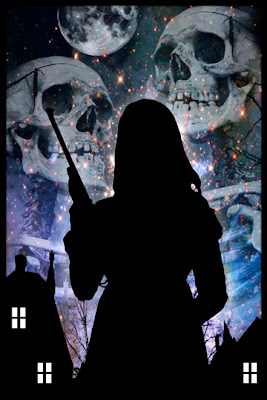
This is an updated post. See content below first :)
Here is the same piece broken down in three colors ready for the silkscreen process. The next step is to turn each of these layers into black and transparent images to burn the screen. Once the three screens are washed the negative space is left and ink can be forced through on paper. Look for the final result posted here after it is printed tomorrow.
Start Here
I'm starting to work towards creating some images that can be used to make art prints for the silk screen process. This is image is my first design that will make this move. I like it. It's all layer-y and pretty and has the feel of a a Lotte Reiniger film. Lotte was one of the earliest animators who worked in silhouette (and from Berlin - even better). I remember seeing her Pied Piper of Hamelin piece and falling in love with her careful and ingenious use of cut paper to tell (to me) a well known story. The visual quality of the silhouette also had a very creepy feel to me so this really works with my love of exploring the shadow themes in fairy tales. Keeping with my life long love of this type of story, I look at this piece as being a post-modern homage to kick-ass female leads in the horror genre. I will continue to update the process here and show the steps of taking apart and reconstructing in a different medium, but for now let's just say I'm very pleased with the look and excited to explore something new. The silk screen piece is being printed with the help of Madpixel and will be shown at the Ultra Pop Halloween show.







